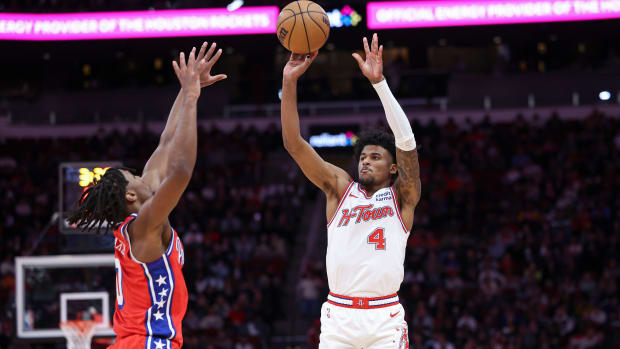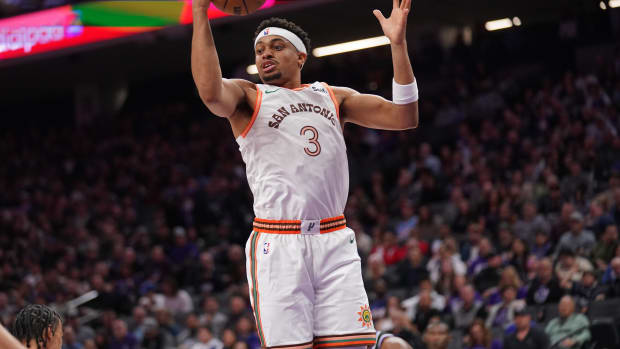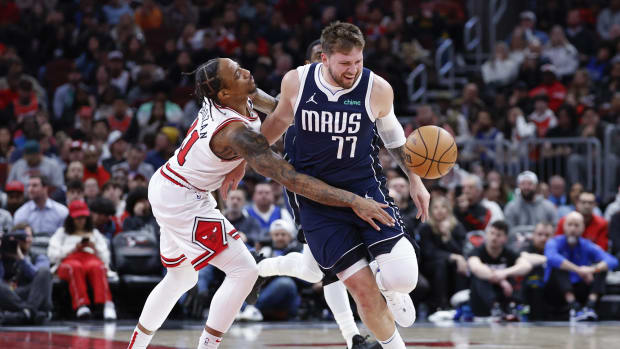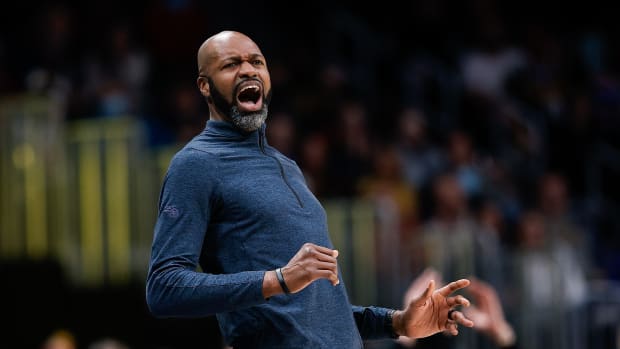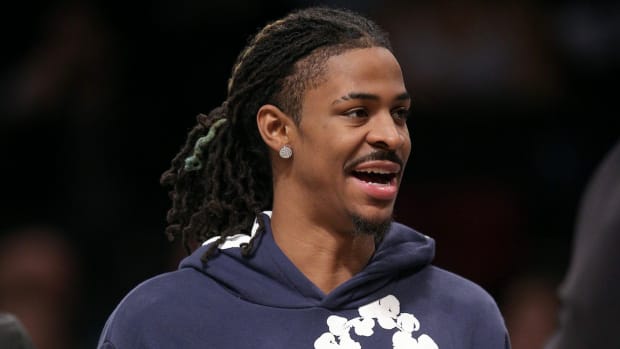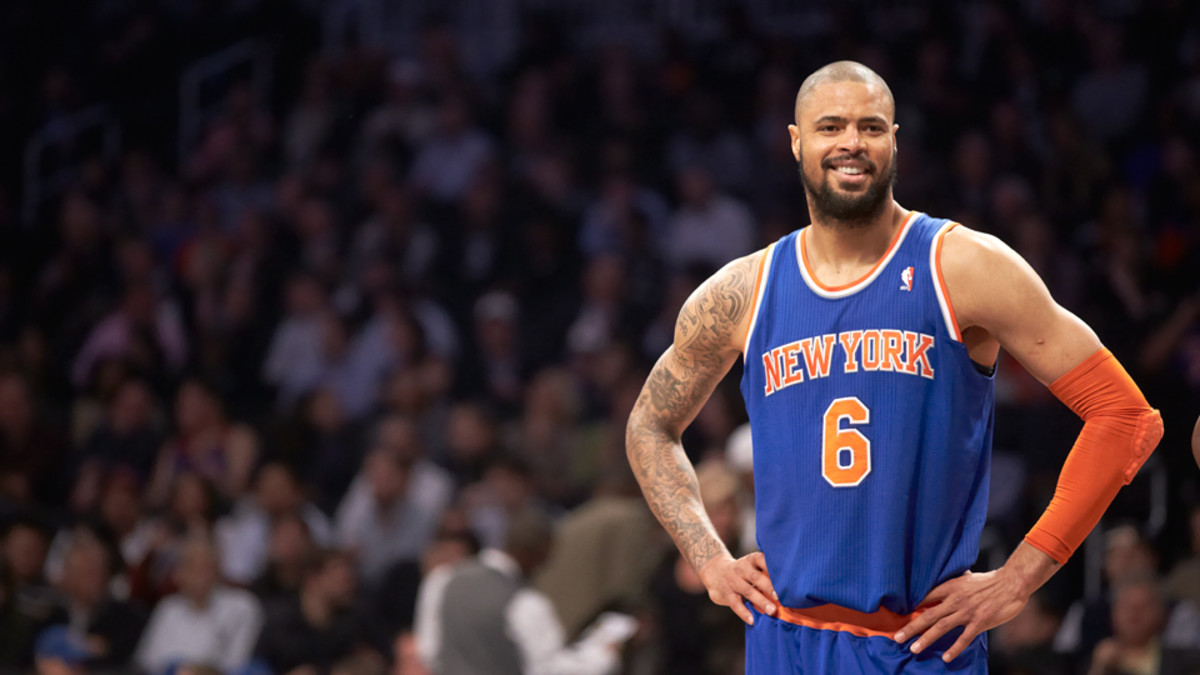
Breaking down the value Tyson Chandler adds to the Mavericks
Dallas paid no small price in its summer reacquisition of Tyson Chandler. The co-headliner in the operative trade was Jose Calderon—an offensive maestro and standout shooter who manned the point for the Mavericks last season. Samuel Dalembert (Dallas' starting center), Shane Larkin (Dallas' 2013 first-round selection), Wayne Ellington and two second round picks were also shipped out in the deal, while the Mavs in return took back the weight of Raymond Felton's contract.
All of this comes in exchange for an oft-injured center who limped through 55 games last season to lesser effect than usual. Chandler wasn't quite himself in those games when he did suit up; his loud, energetic play was generally tapped or nagged or in some way impeded, resulting in Chandler's worst statistical season in four years. Yet Dallas still surrendered a valued leader of its offense and a handful of other pieces to acquire him based on very simple reasoning: If Chandler recovers to have anything resembling a typical season, he'll be an enormous upgrade over the outgoing Dalembert.
Rick Carlisle and the Mavericks know this better than anyone, having seen both players within the context of their particular systems. Chandler, upon his arrival in 2010, took to both quickly and established himself as an opening night starter. By season's end he was the second-best player on a title team. Dalembert, in contrast, irked Carlisle to the point that he played just 20.2 minutes a game in spite of his needed skill set. The 2013-14 Mavs yearned for interior defense, yet Carlisle found that he could only trust Dalembert's play to a point.
To be fair, Dalembert did manage a noticeably positive defensive impact overall even as his inconsistency frustrated Carlisle. When engaged (and not winded), Dalembert was light enough on his feet to at least get in the way of opponents’ pick-and-rolls. He helped Dallas in defending the lane more effectively, with opponent's shooting lower percentages both at the rim and in the high paint when he was on the floor per NBA.com. In total, Dalembert's presence helped the Mavericks' defense by 2.6 points per 100 possessions relative to when he sat. Woven into that number were the corresponding shortcomings of Dalembert replacements Brandan Wright and DeJuan Blair, though Dalembert himself cannot be denied some claim to defensive value.
Offseason grades: Southwest Division
Even still, Chandler's arrival should bring about defensive improvement— largely on the grounds of his particular talents and commitment to a leadership role. The ever-flighty Dalembert does as he will, as has been proven in his many NBA stops. Chandler, on the other hand, will work 'til he drops provided teammates share in his investment. That joint accountability was absent in New York last season, only adding to the burden on Chandler as he worked his way back from a leg injury and fought through various other ailments. Those Knicks as a whole tuned out head coach Mike Woodson and each other as the season wore on. Chandler came to play a role in the resulting struggles, both by fuming at his teammates and giving up on plays out of exasperation.
Things should be better for Chandler next season in part because of Dallas' collective professionalism. Last season, the Mavericks ranked in the bottom third of the league in points allowed per possession, though not for lack of trying. Even defensively challenged players like Calderon and Monta Ellis were at least putting in the requisite effort, though they lacked either the physical abilities or the instincts to obstruct their opponents. A player in Chandler's position can appreciate the difference and, assuming he is in relatively good health, the Maverick defense should be noticeably better for it.
Chandler's ability to fulfill Dallas' particular, glaring needs for rim protection and defensive leadership, however, shouldn't overshadow his offensive utility. Chandler has never averaged more than 12 points per game in any of his 13 NBA seasons. He does not work over opponents in the post nor create any offense of his own. Yet Chandler's teams score far more efficiently with him on the floor as a general trend, including the three-point bump he gave last year's Knicks in an off year. One can see the relative ease with which an offense flows with Chandler as its center: His rolls to the rim give shooters room to breathe, his hard screens help build a momentum within set plays and his hands and height make him a great target for finishes around the rim.
NBA GRADES: Atlantic | Central | Southeast | Pacific | Southwest | Northwest
That skill set might not sound like much, but a mobile, athletic center with those qualities can stimulate offensive production while rarely touching the ball. There's high basketball value in players who can exercise influence over the game without direct control. Chandler is in the rare class that can do so on both ends. He moves in such a way on both offense and defense that demands opponents pay attention, lest they give up a lob or find their shot snuffed at the rim. Even casual NBA fans know this of Chandler's defense, as his credentials have been affirmed with three All-Defense selections and the 2012 Defensive Player of the Year award. His offensive charms, though, are still relatively unheralded—especially in comparison to other low-scoring centers like Dalembert.
On a per-36-minute basis last season, Dalembert actually outscored Chandler by about a point on a comparable field goal percentage. But the Mavericks were an inferior offensive team overall (by 4.8 points per 100 possessions!) by having him on the floor. Dalembert is, in some ways, an empty version of Chandler. He plays a similar role in the most general sense, getting only occasional touches and foregoing any creative responsibility. Yet when Dalembert moves around the floor he generally moves alone; opponents do not fear a man with such buttery fingers and bumbling footwork unless he stands within arm's reach of the rim. Even Dalembert's screens flake and his rolls peter out—compounding negatives that made him a perpetual drag.
Such is Dalembert's lot in the NBA, making the difference between his game and Chandler's something of a gulf. This isn't merely an upgrade from a part-time starter to a more established defensive anchor. Chandler's acquisition is perhaps even more valuable for what it means for Dallas' offense, which in turn allows him to log more playing time than Dalembert realistically could have. Teams, even those as flexible and well-run as the Mavs, can only weather liabilities for so long. What Dalembert couldn't (and in some cases, wouldn't) do defined the limits of both his playing time and value. The possibilities with Chandler, assuming even reasonably good health, are far more expansive.






























